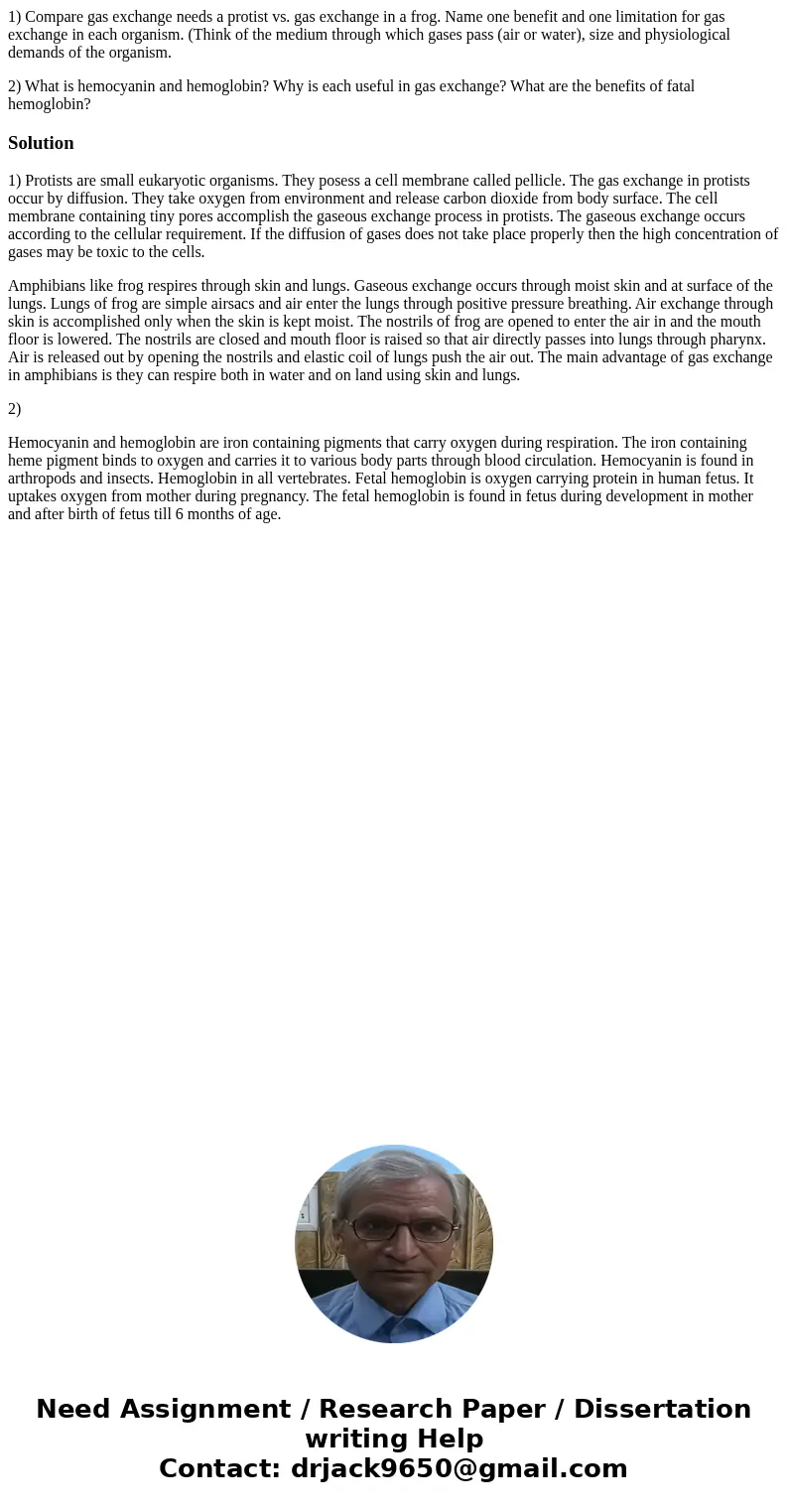1 Compare gas exchange needs a protist vs gas exchange in a
1) Compare gas exchange needs a protist vs. gas exchange in a frog. Name one benefit and one limitation for gas exchange in each organism. (Think of the medium through which gases pass (air or water), size and physiological demands of the organism.
2) What is hemocyanin and hemoglobin? Why is each useful in gas exchange? What are the benefits of fatal hemoglobin?
Solution
1) Protists are small eukaryotic organisms. They posess a cell membrane called pellicle. The gas exchange in protists occur by diffusion. They take oxygen from environment and release carbon dioxide from body surface. The cell membrane containing tiny pores accomplish the gaseous exchange process in protists. The gaseous exchange occurs according to the cellular requirement. If the diffusion of gases does not take place properly then the high concentration of gases may be toxic to the cells.
Amphibians like frog respires through skin and lungs. Gaseous exchange occurs through moist skin and at surface of the lungs. Lungs of frog are simple airsacs and air enter the lungs through positive pressure breathing. Air exchange through skin is accomplished only when the skin is kept moist. The nostrils of frog are opened to enter the air in and the mouth floor is lowered. The nostrils are closed and mouth floor is raised so that air directly passes into lungs through pharynx. Air is released out by opening the nostrils and elastic coil of lungs push the air out. The main advantage of gas exchange in amphibians is they can respire both in water and on land using skin and lungs.
2)
Hemocyanin and hemoglobin are iron containing pigments that carry oxygen during respiration. The iron containing heme pigment binds to oxygen and carries it to various body parts through blood circulation. Hemocyanin is found in arthropods and insects. Hemoglobin in all vertebrates. Fetal hemoglobin is oxygen carrying protein in human fetus. It uptakes oxygen from mother during pregnancy. The fetal hemoglobin is found in fetus during development in mother and after birth of fetus till 6 months of age.

 Homework Sourse
Homework Sourse